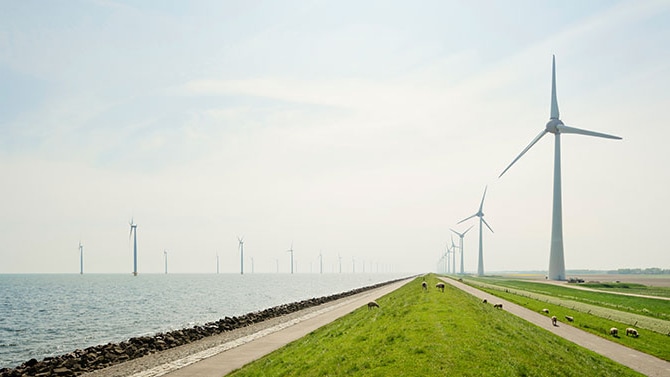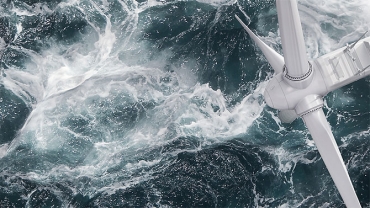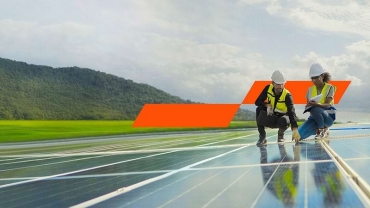
Legislative proposal CO2 levy for the industry
16/09/20
In the Budget 2021 it was announced that a national CO₂ levy is to be introduced in 2021 for industrial production and waste incineration (Industry Carbon Tax Act [Wet CO₂-heffing industrie]). This levy is to be introduced alongside the existing system for the pricing of CO₂ at EU level (EU-ETS). In addition to the CO₂ levy, the Budget 2021 also provides for changes to the energy tax/sustainable energy surcharge (EB/ODE). The ETS indirect emission costs subsidy scheme is also ending this year.
The Netherlands has committed itself to the UN Paris Agreement to reduce CO₂ emissions by 40% in 2030. The government laid down this target in the Dutch (Draft) Climate Agreement (28 June 2019) to reduce CO₂ emissions by 49% in 2030 compared to the level in 1990. In the Dutch Climate Agreement the government refers to a number of new measures to achieve the Dutch targets, including the introduction of a national CO₂ levy for industry and a change to the ODE/EB levy.

The Dutch CO₂ levy is to be introduced via the EU-ETS system alongside the European system for pricing CO₂
The European Emissions Trading System (EU ETS) is an important existing policy instrument at European level for the pricing of CO₂ emissions by companies in, for example, the industrial and electricity sector.
The system provides for an annual decrease in the number of emission allowances by 2.2%, to 0 in 2057. Because the number of emission allowances becomes scarcer each year, an increase is expected in the price per ton of CO₂ (approximately EUR 25.00 on 1 March 2020). Pricing therefore takes place within the EU ETS because a CO₂ ceiling has been combined with the trade in emission allowances (the so-called 'cap and trade system). At European level the Green Deal refers to an accelerated reduction in the annual quantity of emission allowances.
What does the national CO₂ levy imply?
The levy is subject to an increasing price path, whereby the price is a minimum price compared to the EU-ETS price. A price of EUR 30 per ton of CO₂ is being proposed for 2021, increasing to EUR 125 per ton of CO₂ in 2030.
Not all emissions are to be taxed. In earlier years efficient emissions - efficient compared to the ETS benchmark - and some of the inefficient emissions are exempted (by means of so-called dispensation rights). The allocated dispensation rights decrease every year meaning that, in later years, even some of the efficient emissions will be taxed. The decrease in dispensation rights is driven by an industry-wide reduction factor. The relatively low prices and taxed volumes in the initial period are intended to give companies time to reduce their emissions. The same applies to aspects of the way the CO₂ levy is designed. For example, it may be possible for companies to claim back the tax paid, after investing in emissions reduction, if the investment leads to an excess in exempted emissions (the so-called recalculation).
On the other hand, companies can trade exempted emissions with other companies. In the event of a high level of supply, this trading can have a cost-reducing effect for inefficient companies. According to the Ministry of Finance the levy will apply to 235 companies.
The implementing body is not the Tax and Customs Administration but the Dutch Emissions Authority (NEa). The tax is due annually on declaration, no later than 1 October after the end of the calendar year in question. The basis for the calculation of the tax due is the industrial emissions report to be submitted by the companies concerned and will be assessed by the NEa (and, where necessary, the NEa will be able to make an ex-officio assessment).

PwC vision on CO₂ levy and other climate-related missions
As regards the introduction of a national CO₂ levy, the government has repeatedly acknowledged the importance of an equal level playing field between Dutch companies and their international competitors. In this context PwC has carried out three related studies on behalf of the Ministry of Economic Affairs and Climate Policy.
Why is pricing needed?
The emission of greenhouse gases during the production and consumption of industrial products can have harmful effects on the environment. Producers and consumers do not take these harmful effects into account in decisions on production and consumption and the result is excessive emissions. A levy on CO₂ emissions would ensure that the costs for society are 'internalised' by the producers and consumers, thereby leading to a reduction in greenhouse gas emissions.
First two PwC studies
In the first two studies (first study: 13 March 2019; second study: 14 June 2019) PwC focused on the possible consequences of introducing a national CO₂ levy in the Netherlands. PwC agrees that CO₂ pricing can be a useful instrument in terms of reducing emissions, but also observed that pricing at national level can lead to carbon leakage in terms of both economic activity and emissions. For that reason PwC is initially advocating the strengthening of existing European pricing by means of EU-ETS.
Third PwC study
The third study performed by PwC was published on Budget Day 2020. In this study PwC carried out a comprehensive analysis of the competitive consequences of a number of climate policy instruments, including the CO₂ levy, the shift in the energy tax/sustainable energy surcharge, the abolition of the ETS indirect cost compensation, and the SDE++ and EIA subsidies. The key conclusions are:
Carbon leakage
Current climate policy implies a risk of carbon leakage.
Various measures (including the CO₂ levy as well as changes to the energy tax/sustainable energy surcharge and the abolition of the indirect cost compensation for EU ETS) are leading to a cost price increase for Dutch industry. Due to the limited possibility of increasing sales prices without losing market share and limited emission reduction options for the industry in the coming 10 years, the cost increase is expected to have a negative impact on the financial results of industry in the Netherlands. This conclusion applies to all 9 sectors that were researched.
Detailed case studies involving three companies have revealed that the negative impact may be significant. Based on the assumptions made, this impact can vary from approximately 8% to appoximately 52% of the EBITDA in the medium-high levy scenario (a levy of EUR 30 per ton in 2020, increasing to a levy of EUR 120 in 2030). In the high levy scenario the effect can increase to approximately 75% of the EBITDA. In both scenarios we have taken account of a reduction factor which increases from 1.2 to 0.75 (this factor multiplied by the efficient emissions determines the exempted emissions). This creates the risk of carbon leakage in terms of both economic activities and emissions.
Subsidies
More research is needed into whether the subsidies are sufficient.
- Sufficient and well-timed subsidies can mitigate the negative financial consequences by enabling companies to reduce emissions. However, it is currently uncertain as to whether the subsidies are sufficient to cover the unprofitable top of the necessary investments. After all there is a lack of clarity regarding the size of the unprofitable top and the number of available subsidies.
- Not all companies will benefit from these subsidies, for example because they are reliant on more expensive emission reduction options, and not all emission reduction technologies are eligible for subsidies, while for some companies the transport and infrastructure costs of the emission reduction are not covered by the subsidies.
- Attention also needs to be paid to the structure of the subsidy procedures due to the chicken and egg problem, namely that the subsidy is only awarded if the company can demonstrate that real steps have been taken (such as signed contracts with infrastructure suppliers). The problem is that these steps can only be taken if there is clarity about the availability of subsidies.
- The focus of the Stimulation of Sustainable Energy Transition (SDE++) scheme is on short-term cost efficiency. More attention needs to be paid to subsidies which are aimed at decreasing the costs of emission-reducing technologies because cost reduction will lower the unprofitable top of emission-reducing technologies, which in turn will lead to a reduced need for subsidies.
Infrastructure
Clarity about the availability of infrastructure is needed in order to facilitate a reduction in emissions and to reduce the risk of carbon leakage.
Uncertainties relating to policy structure
Something must be done as soon as possible about the uncertainties relating to policy structure.
At the time of writing the report, key aspects of, for example, the CO₂ levy were not yet clear (for example the price path and the reduction factor). As a result we included a variety of scenarios in the study. The bill provides clarity about these key important parameters. However, the government still has the option of changing both the price path and the reduction factor at a later point in time. As a result there continues to be a lack of certainty about these important parameters and that is making it difficult to take from investment-related decisions.
Price path and reduction factor development in accordance with the bill
| Year | 2021 | 2022 | 2023 | 2024 | 2025 | 2026 |
| Price path | €30 | €40.56 |
€51.12 |
€61.68 |
€72.24 | €82.80 |
| Reduction factor | 1.2 |
1.14 | 1.09 |
1.03 |
0.97 |
0.92 |
| Year | 2027 | 2028 | 2029 | after 2030 |
| Price path | €93.36 | €103.92 |
€114.48 |
€125.04 |
| Reduction factor | 0.86 | 0.80 | 0.74 | 0.69 |
Where do we go from here?
As PwC we are keen to be involved in structuring climate policy in the Netherlands. We therefore hope that the government will take the recommendations from the PwC research into account in the further processing of the bill.
For more information about the PwC level playing field studies, please contact Gülbahar Tezel. For more information about the tax issues relating to the CO₂ levy, please contact Niels Muller.

Contact us

Gülbahar Tezel
Partner Strategy&, Lead Denktank Energietransitie, PwC Netherlands
Tel: +31 (0)61 391 56 71

Partner, Energy transition and sustainable energy, PwC Netherlands
Tel: +31 (0)65 160 08 61

















